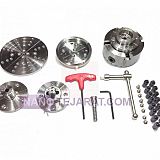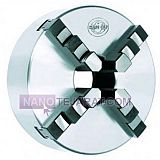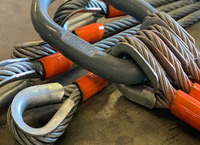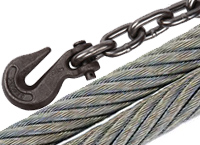- Cutting and shaping tools
Four Systems Of Lathes
Search Results For Four Systems Of Lathes| ziax-tools |
| Iran |
| 021-66728980 |
Four systems of lathes
The four-jaw lathe chuck is a key component in lathe machines, responsible for securely holding and stabilizing the workpiece during machining operations. This tool is typically made from hardened alloy steel to provide high resistance against wear, mechanical pressure, and heat generated during the turning process. The four-jaw chuck is designed to firmly grip workpieces of various shapes and sizes without slipping. This feature enhances the precision and final quality of the work while also allowing for quick and easy workpiece changes.
Structurally, the four-jaw lathe chuck consists of a sturdy body and hardened jaws that evenly and concentrically transfer the clamping force to the workpiece. Its internal mechanism is usually spiral or gear-driven, ensuring synchronized movement of the jaws. Some advanced models feature hydraulic or pneumatic systems to open and close the jaws, significantly increasing operational speed and accuracy. When selecting a four-jaw lathe chuck, parameters such as jaw diameter, clamping capacity, jaw material, and the type of internal mechanism are critically important to guarantee optimal performance and long service life.

 | |
| ziax-tools | 021-66728980 |
| arismantools |
| Iran |
| 66756188 |
Four systems of lathes
The lathe chuck is a key and essential component in the machining process, primarily responsible for securely and precisely holding workpieces of various shapes and sizes. This tool is typically made from hardened and durable steel to withstand mechanical pressures, wear, and impacts caused by turning operations. The jaws of the chuck are adjustable and move in synchronization, allowing precise clamping of round, polygonal, or even irregularly shaped parts, which contributes to improving the final product quality.
The structure of the lathe chuck includes a high-precision gear system with engineered design that ensures smooth and vibration-free jaw movement. Its secure locking mechanism prevents unwanted slipping or displacement of the workpiece, playing a crucial role in enhancing operator safety and machining quality. The ergonomic design and quick jaw replacement capability not only facilitate ease of use but also increase productivity in industrial and workshop environments, making this chuck a reliable and suitable choice for various turning projects.

 | |
| arismantools | 66756188 |




